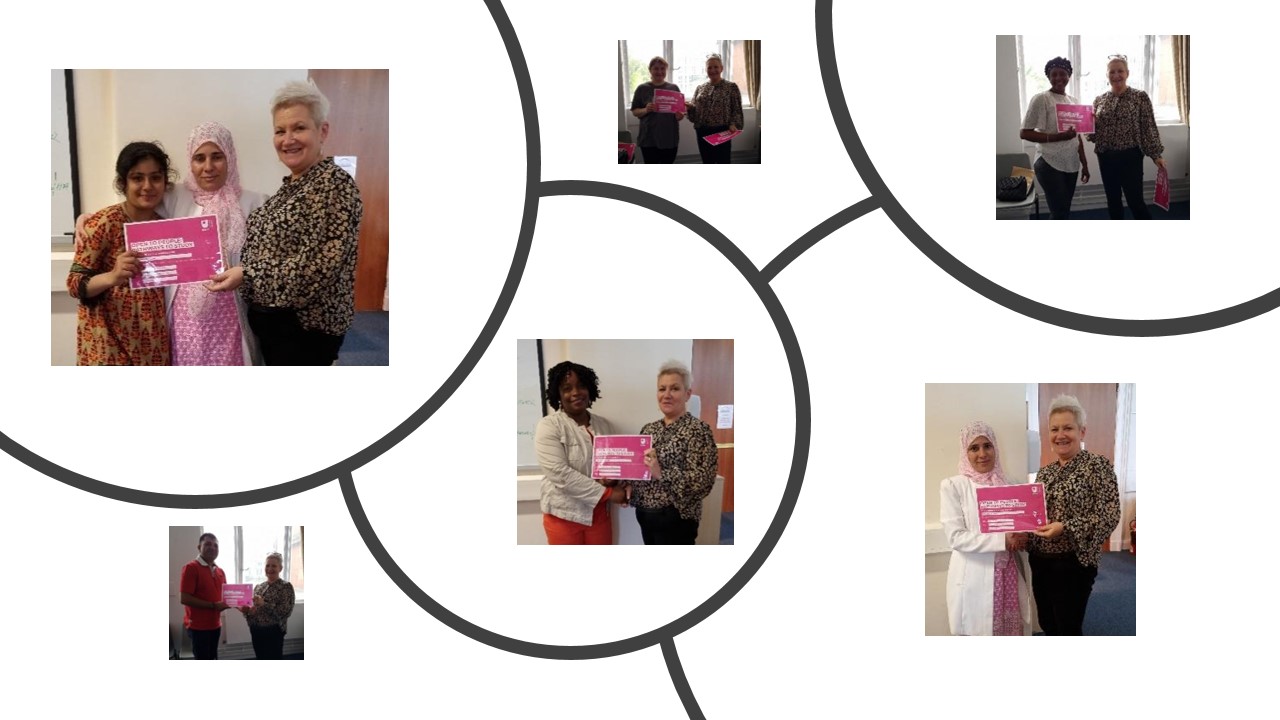Many English for Academic Purposes (EAP) programmes test learners’ proficiency to ensure they will be able to study at the right level for them. The Open to People pilot was intended as an access level programme so did not have the same academic standard for English. However, the project team wanted to ensure that learners would be in the best position to benefit from the programme and we discussed with the partners what the required level of English as a Second or Other Language (ESOL) proficiency should be. We also discussed previous educational qualifications (PEQs).
We decided to set the minimum requirement at ESOL Level 2, as the partners felt that many forced migrants have a higher level of proficiency than they have been assessed at due to long waiting lists for ESOL classess. It was decided to prioritise access for learners who hadn’t had the opportunity to study at this level ahead of those with university-level qualifications from their home countries.
Recruiting participants
The partner organisations took responsibility for identifying and recruiting suitable participants. During registration, participants provided information on gender, access needs, digital equipment, language level and previous educational qualifications (where known), and their preference for morning or evening sessions.
The OU in Scotland team expressed doubts on a couple of participants who had low or no PEQs, for example had not completed primary school, but the partners were confident about their ability in each case so they took part in the pilot.
Online assessment tools
We considered using digital tools to assess language fluency, such as the Duolingo English Test Access Programme, which is offered free to colleges, universities and organisations working to support asylum seekers and refugee applicants to access higher education. A member of the project team undertook this and reported that it was overly invasive in the data they collected. We decided to trust the partners in assessing the readiness of participants to learn in English.
In Week 17 of the programme (the penultimate session), the focus was on the next steps of their learning journey. It included a self-assessment tool developed by the Open University Am I ready to study in English? Tutors subsequently discussed this with learners in their final 1:1 sessions.
Impact of fluency and PEQ on completion rates
As part of the evaluation, we measured the impact of fluency and PEQs on learner completion rates. Excluding a couple of learners who had not provided data on either ESOL levels and PEQ, there was no clear correlation in relation to PEQs. Some participants with high PEQs (including higher level study) did not complete the course, while others with low PEQs (primary school only) successfully completed the course and assessments.
Language skills appear to be a more significant factor, with none of the learners reporting ESOL level 3 or below completing the course. Three learners with intermediate fluency (level 4) managed to complete. Both learners who self-reported ‘native’ levels of fluency completed the course.
Previous educational qualifications (PEQs) of participants were not a marker for success on the course but there is an indication that those with stronger language skills (Level 4 and above) were more likely to complete.
Additional support
Synchronous learning “relies heavily on linguistic capital” (Bali and Meier, 2014). Because English is not their first language, taking in all that written and verbal information in one sitting was a lot to ask. Providing the materials asynchronously would have given them time to process new concepts, develop their understanding, and explore materials at their own pace.
For example, we could provide a web space for learners to access the course materials, slides and learning activities. We could also have provided online tools which would enable them to express their learning in different ways, such as audio or video recording tools. This would also support learner autonomy and agency (Witthaus and Ryan, 2020).
Bali, M. and Meier, B. (2014). ‘An Affinity for Asynchronous Learning’, Hybrid Pedagogy, 4 March. Available at: https://hybridpedagogy.org/affinity-asynchronous-learning (Accessed: 10 May 2023).
Witthaus, G. & Ryan, G. (2020). Supported mobile learning in the “Third Spaces” between non-formal and formal education for displaced people. Zenodo [Preprint]. Available at: https://doi.org/10.5281/zenodo.4293565. [CC-BY-SA]

